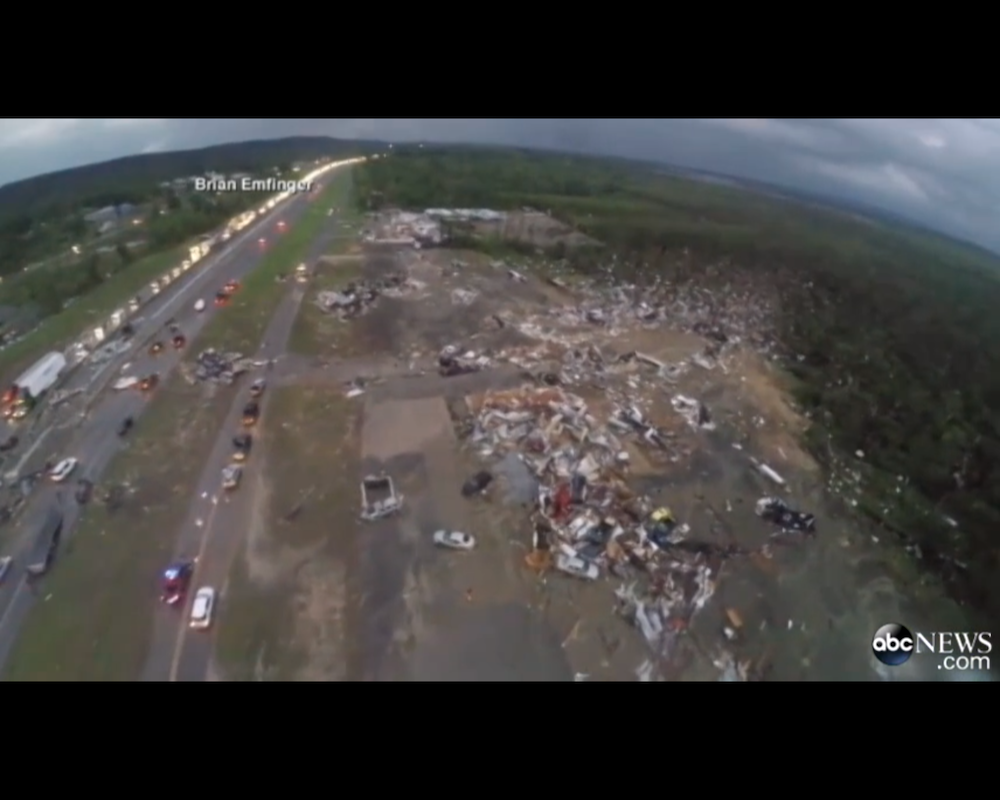Arkansas Tornado: 5 Facts About the Deadly Twister

A system of deadly tornadoes ripped through Arkansas and Oklahoma yesterday (April 27), killing at least 17 people and bulldozing trees and houses, authorities said.
A large tornado touched down in central Arkansas around 7 p.m. local time northeast of Little Rock, cutting a path of destruction through the cities of Mayflower and Vilonia, according to the National Weather Service (NWS). Another twister hit Quapaw, Okla., Sunday evening, officials said.
Emergency responders are still confirming the number of casualties, but the tornado may be the worst of the season so far. Here are five facts to know about the twister. [Destructive U.S. Tornadoes of April 2014: Gallery]
1. Number of people killed
In Arkansas, the tornado was responsible for at least 16 deaths as of Monday morning (April 28), including 10 in Faulkner County, five in Pulaski County and one in White County, the state's Department of Emergency Management reported, according to the Wall Street Journal.
In Oklahoma, Ottawa County Sheriff's Department officials reported one death in the city of Quapaw, the Wall Street Journal said.
A tornado watch remained in effect until 10 a.m. CDT (11 a.m. EDT) Monday for 12 counties in eastern Arkansas, 11 counties in northern Mississippi, two counties in southeastern Missouri and 14 counties in western Tennessee, according to the NWS.
Get the world’s most fascinating discoveries delivered straight to your inbox.
2. How much damage
U.S. weather officials have not yet provided estimates of the size and strength of the Arkansas tornado, but local television footage showed houses ripped from their foundations, trailers strewn around and trees stripped of their limbs. [See Video of Arkansas Tornado Damage]
About 35,000 people lost electricity in Arkansas Sunday night, and about 16,000 remained without power Monday morning, power company Entergy Arkansas reported, according to the Wall Street Journal.
The NWS will survey the damage from the Arkansas tornado and others in the region, in order to determine their number and magnitude.
3. How it started
A major storm system moved onto the Plains from the Rockies early yesterday morning (April 27), dragging a cold front with it and making thunderstorms likely, the NWS reported.
The storm "was expected to become the largest severe weather episode so far this spring," the NWS said, with strong tornadoes — at least EF-2 — and hail bigger than golf balls expected. (The Enhanced Fujita scale rates tornadoes from 0 to 5, with 0 being the weakest and 5 being the strongest.)
The storm did not turn into an "outbreak of severe weather," but it did cause a supercell — a storm with rotating updrafts — to rapidly intensify northwest of Little Rock, Ark., which developed into a massive tornado.
4. How it compares to other tornadoes
The Arkansas twister may be the deadliest single tornado in the state since the EF-4 Interstate 30 tornado that killed 15 people in Saline and Pulaski counties on March 1, 1997, according to the NWS.
The town of Vilonia was hit by a tornado three years ago, on April 25, 2011, which killed four people and caused significant damage to buildings, authorities said at the time, according to the Wall Street Journal.
Tornadoes made the news in 2013 when a deadly EF-4 tornado hit Moore, Okla., killing two dozen people and injuring hundreds of others.
5. Tornado season is off to a slow start
The deadly tornado came in what has been the slowest start to the tornado season in a century. As of April 21, the 2014 season had seen the fewest tornadoes since 1915, with just 20 EF-1 tornadoes, Harold Brooks, a senior researcher at the National Oceanic and Atmospheric Administration's National Severe Storms Laboratory in Norman, Okla., told Live Science at the time. The average number of tornadoes by that time of the year is 157, according to NWS statistics.
The brutal 2014 winter in tornado-prone regions is likely what caused the sluggish start to the tornado season, Brooks said. However, a colder-than-normal summer could mean more tornadoes than normal, he added.
Follow Tanya Lewis on Twitter and Google+. Follow us @livescience, Facebook & Google+. Original article on Live Science.

